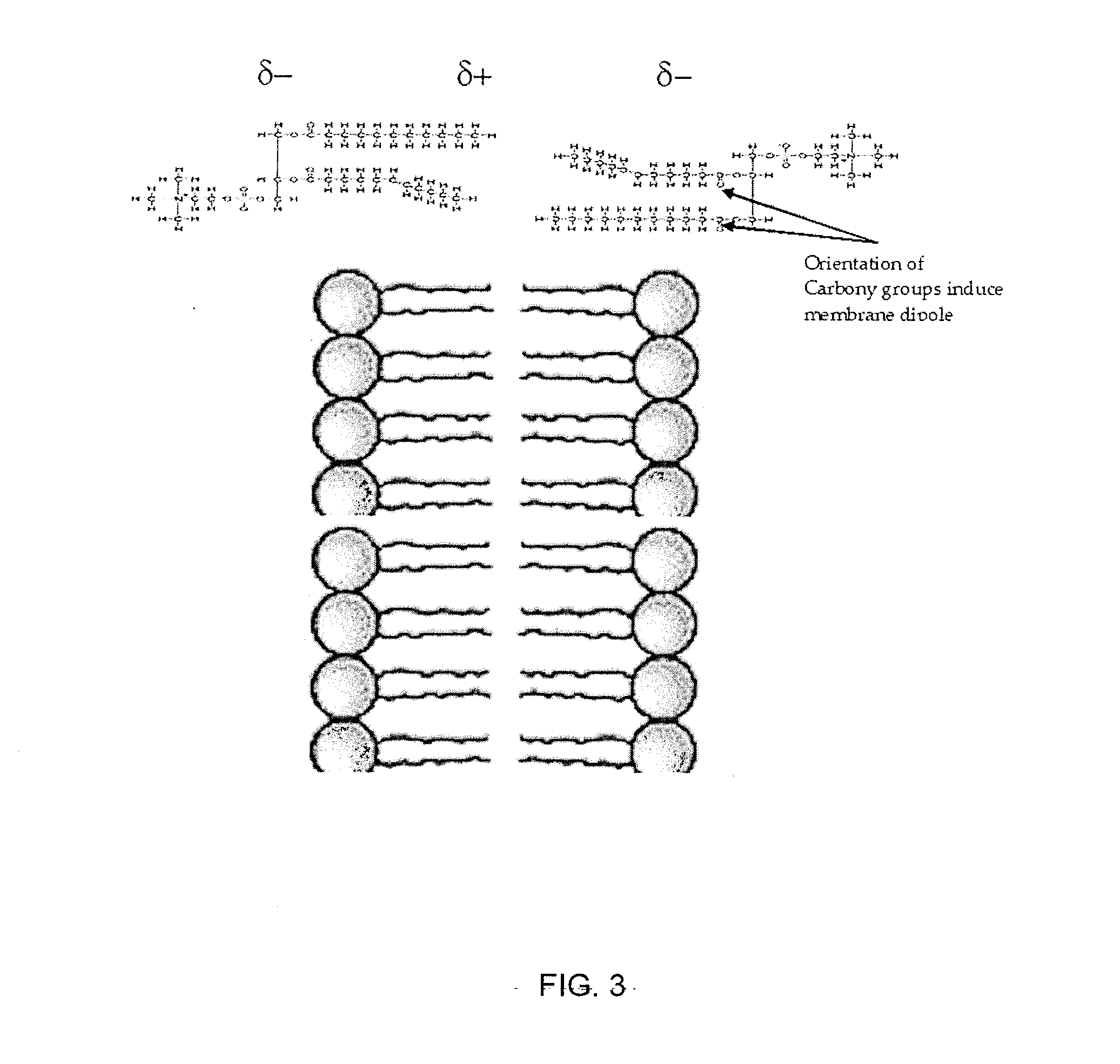Near-infrared electromagnetic modification of cellular steady-state membrane potentials
a technology of steady-state membrane potential and near-infrared electromagnetic modification, which is applied in the field of near-infrared electromagnetic modification of cellular steady-state membrane potential, can solve the problems of nutrient uptake, damage to other cellular activities, and the addition of lamisil, and achieves the deleterious effect of sub-lethal nimel irradiation
- Summary
- Abstract
- Description
- Claims
- Application Information
AI Technical Summary
Benefits of technology
Problems solved by technology
Method used
Image
Examples
examples
[0347]The following examples are included to demonstrate exemplary embodiments of the present invention and are not intended to limit the scope of the invention. Those of skill in the art, will appreciate that many changes can be made in the specific embodiments and still obtain a like or similar result without departing from the spirit and scope of the present invention.
example i
[0348]
TABLE 2MIC values for Susceptible, Intermediate and Resistant S.aureusMinimum Inhibitory Concentration (MIC) Interpretive Standards (μg / ml) for Staphylococcus sp.Antimicrobial AgentSusceptibleIntermediateResistantPenicillin≦0.12—≧0.25Methicillin≦8—≧16AminoglycosidesGentamicin≦48≧16Kanamycin≦1632≧64MacrolidesErythromycin≦0.51-4≧8TetracyclineTetracycline≦48≧16FluoroquinoloneCiprofloxacin≦12≧4Folate Pathway InhibitorsTrimethoprim≦8—≧16AnsamycinsRifampin≦12≧4
example ii
Bacterial Methods: NIMELS Treatment Parameters for In Vitro MRSA Experiments
[0349]The following parameters illustrate the general bacterial methods according to the invention as applied to MRSA for the in vitro Experiments V and VIII-XII.
A. Experiment Materials and Methods for MRSA:
[0350]
TABLE 3Method: for CFU countsTime(hrs)TaskT −18Inoculate overnight culture50 ml directly from glycerol stockT −4Set up starter culturesThree dilutions 1:50, 1:125, 1:250 LB MediaMonitor OD600 of starter culturesT 0Preparation of plating cultureAt 10:00 am, the culture which is at OD600 = 1.0 is diluted 1:300 in PBS (50 mls finalvolume) and stored at RT for 1 hour.(Room temp should be ~25° C.)T +1Seeding of 24-well plates2 ml aliquots are dispensed into pre-designated wells in 24-well plates and transferredto NOMIRT +2 toDilution of treated samples+8After laser treatment, 100 μl from each well is diluted serially to a final dilution of1:1000 in PBS.Plating of treated samples100 μl of final dilution i...
PUM
 Login to View More
Login to View More Abstract
Description
Claims
Application Information
 Login to View More
Login to View More - R&D
- Intellectual Property
- Life Sciences
- Materials
- Tech Scout
- Unparalleled Data Quality
- Higher Quality Content
- 60% Fewer Hallucinations
Browse by: Latest US Patents, China's latest patents, Technical Efficacy Thesaurus, Application Domain, Technology Topic, Popular Technical Reports.
© 2025 PatSnap. All rights reserved.Legal|Privacy policy|Modern Slavery Act Transparency Statement|Sitemap|About US| Contact US: help@patsnap.com



